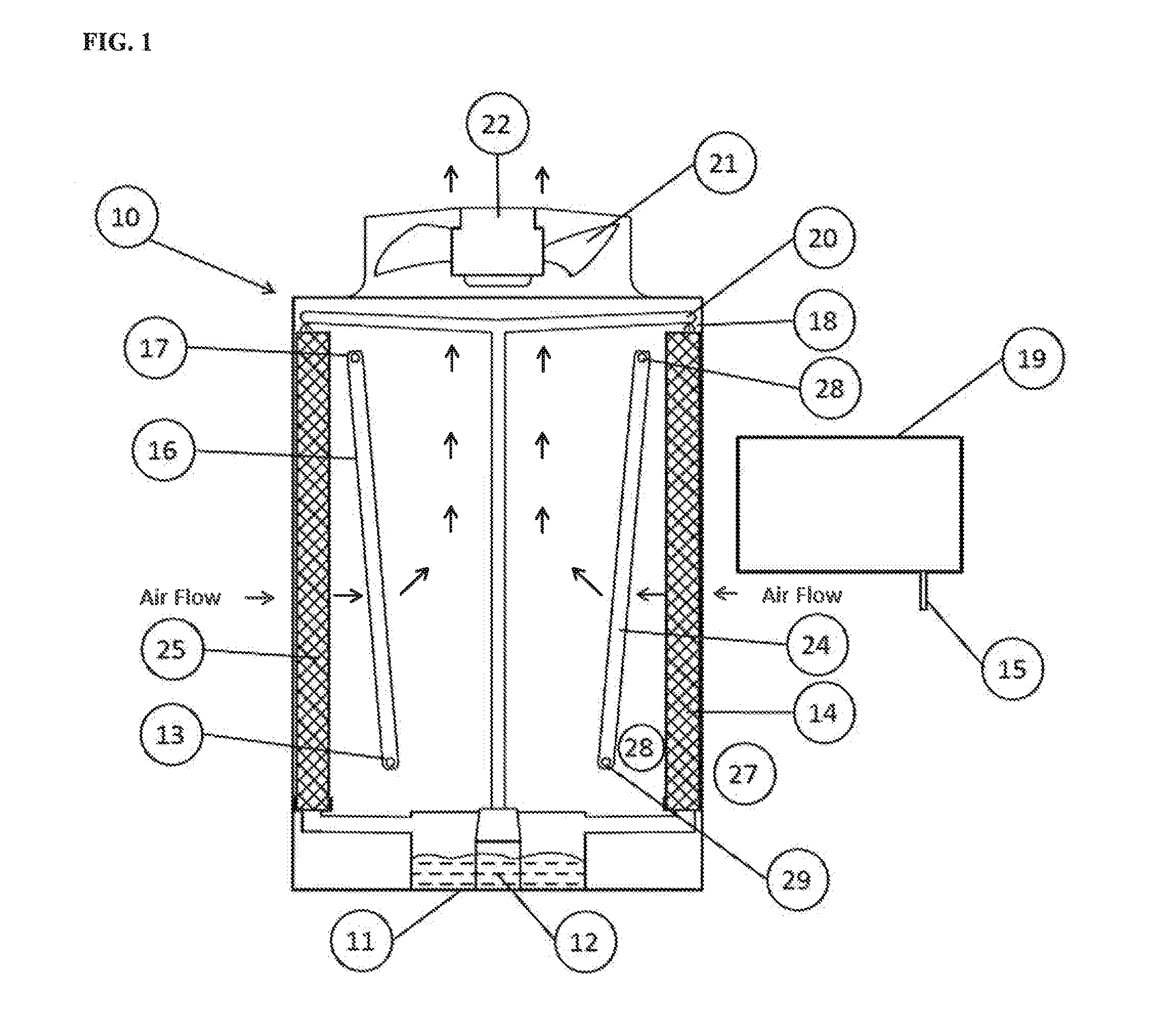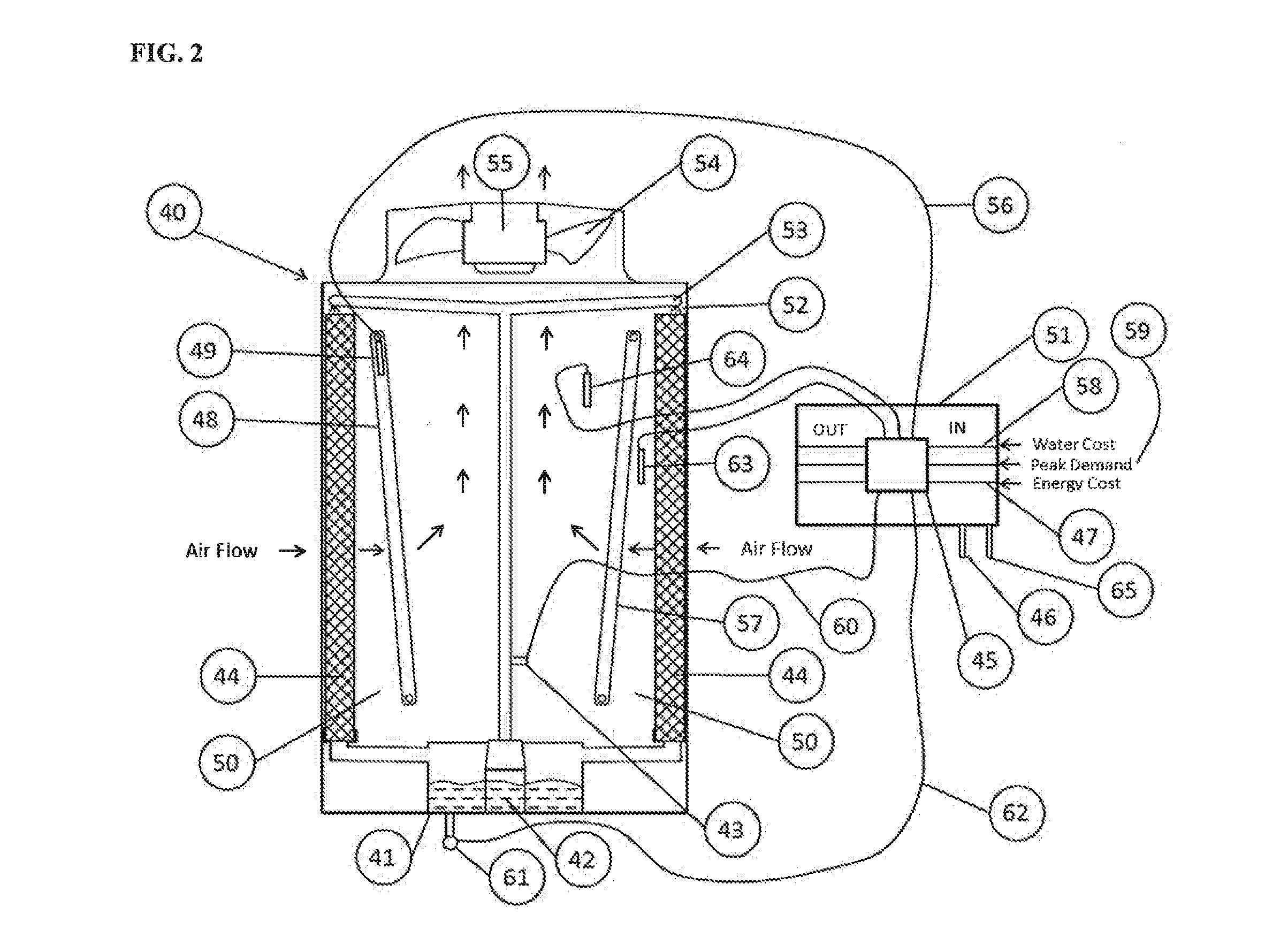Adiabatic refrigerant condenser controls system
a technology of refrigeration condenser and controls system, which is applied in indirect heat exchangers, lighting and heating apparatus, heating types, etc., can solve the problems of reducing airflow through the unit, reducing the efficiency of water or energy resources, and prior art products having a penalty of pressure drop, etc., to achieve high demand, save electricity, and high demand resource
- Summary
- Abstract
- Description
- Claims
- Application Information
AI Technical Summary
Benefits of technology
Problems solved by technology
Method used
Image
Examples
embodiment 30
[0028]FIG. 3, shows an improved adiabatic condenser or fluid cooler embodiment 30 which includes a coil cleaning mode. In this embodiment, the airflow may be reversed so it enters through the fan 35 generally downward and is pushed out through the coils 34 and 39 so as to force accumulated dirt deposits back out of the coils. There may also be coil spray washers 33 inside of the unit to spray water directly onto and through coil 34 to assist in washing the accumulated dirt and debris off of coils 34 and 39. A water connection point 31 and a water valve 32 with control wire 37 are provided so fresh water can be piped to the spray washers 33 and controlled selectively with the fan 35 running backwards by reversing motor 36 via controller 38. The coil cleaning mode may run during the cooling mode or can run when there is no demand for cooling.
[0029]FIG. 4, shows embodiment of an adiabatic condenser or fluid cooler 70 which includes swing away adiabatic pads 74 (shown open) and 82 (show...
embodiment 90
[0030]FIG. 5, is another embodiment of an adiabatic condenser or fluid cooler 90 showing swing away pads 91 that shows the pads lifting up out of the way (gull-wing design). In this embodiment, adiabatic pads 91 may be swung away from coils 94 and 95 by piston actuator 96. Adiabatic pads 92 are shown in the closed operating mode. Hinge 93 keeps the top of adiabatic pads connected to embodiment 90.
[0031]FIG. 6, shows another embodiment of an adiabatic condenser or fluid cooler 100 that allows the bypass of a majority of outdoor ambient air around adiabatic pads 102 when desired. In this embodiment, adiabatic pads are moved further away from the coils 106 and 107 such that air bypass louvers 104 may be installed and selectively operated by controller 108. During the air bypass mode, air bypass louvers 104 may be selectively opened allowing fresh air to directly enter into coils 106 and 107 through openings 103. FIGS. 4, 5 and 6 show embodiments to bypass fresh air around the adiabatic...
PUM
 Login to View More
Login to View More Abstract
Description
Claims
Application Information
 Login to View More
Login to View More - R&D
- Intellectual Property
- Life Sciences
- Materials
- Tech Scout
- Unparalleled Data Quality
- Higher Quality Content
- 60% Fewer Hallucinations
Browse by: Latest US Patents, China's latest patents, Technical Efficacy Thesaurus, Application Domain, Technology Topic, Popular Technical Reports.
© 2025 PatSnap. All rights reserved.Legal|Privacy policy|Modern Slavery Act Transparency Statement|Sitemap|About US| Contact US: help@patsnap.com



